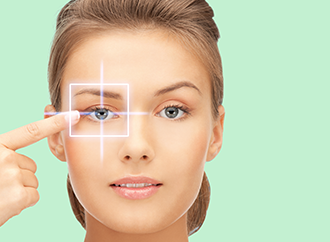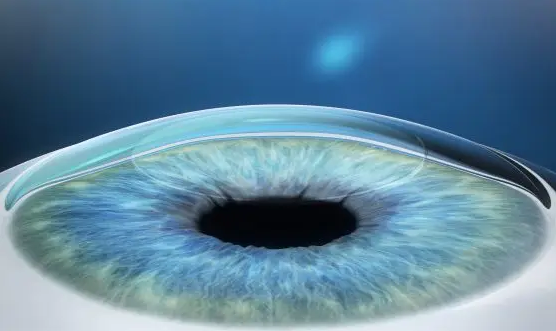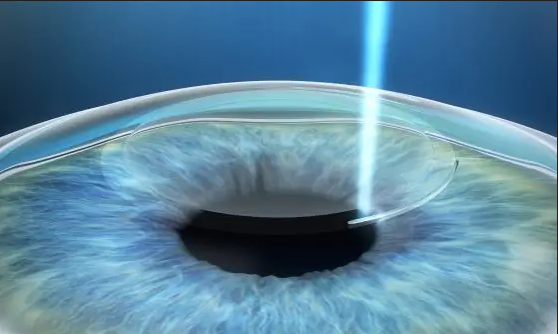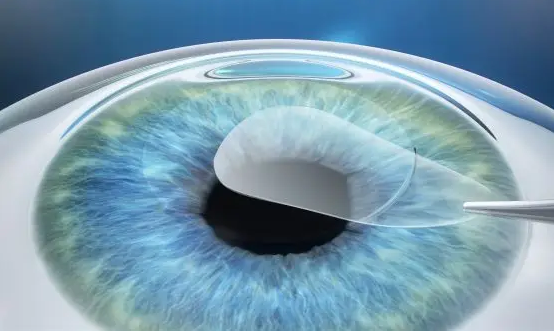
SMILE PRO
SMILE PRO LASER TREATMENT
Smile Pro Laser Treatment, an enhanced version of the Relex Smile and Femto-Lasik methods, is a laser eye surgery technique used to correct refractive errors such as myopia and astigmatism.
SMILE PRO Laser Treatment Procedure
The cornea has a five-layer structure, but the SMILE Pro surgery focuses on the central layer, known as the stroma. During this procedure, a computer-controlled laser creates a precisely shaped, lens-like disc in the stroma called a lenticule. The lenticule is customized to correct the specific shape of the cornea. Next, a small keyhole incision is made with the laser, and the lenticule is removed. Once the procedure is complete, the cornea is reshaped to optimize focus and enhance vision in the long term.
Surgeons worldwide have adopted SMILE Pro as an effective laser eye surgery procedure. The keyhole technique ensures minimal interference with the corneal nerves, allowing for a quick recovery. This helps prevent long-term dry eye problems and maintains corneal strength. In the SMILE Pro, new generation treatment, robotic arms are used for surgery, so patients do not need to enter any tunnel or device. This method makes SMILE Pro laser surgery easily applicable even for patients with claustrophobia. Additionally, the critical laser phase of the surgery is completed in as little as 10 seconds, significantly improving patient compliance with the procedure. Considering all these advanced laser treatments, the SMILE Pro method provides a fast, precise, safe, and effective way to correct refractive errors. This method significantly reduces post-treatment concerns for both patients and doctors.
What Are the Advantages of SMILE PRO Laser Treatment?
• Short treatment duration of just a few seconds
• Suitable for patients with dry eyes
• Keyhole technology (2 mm incision) that allows fast healing
• Effective for myopia up to -10 diopters
• Suitable for the treatment of astigmatism
• Suitable for patients with thin corneas; maintains corneal stability
• No corneal flap formation
• Preservation of corneal nerves and prevention of dry eyes
The biggest advantage of this surgery is that the cornea's biomechanical resistance is minimally affected by the procedure. It is even safer due to the absence of LASIK flap complications and the preservation of the cornea's biomechanical structure.
Therefore, it is particularly suitable for athletes, professions with a risk of trauma such as police and military personnel, individuals who use screens extensively, and those with dry eye symptoms.
Small incision instead of flap: The ReLEx SMILE procedure is gentler on the cornea compared to LASIK.


LASIK SMILE Pro
20 mm 2 mm
flap minimally invasive
How is SMILE PRO Laser Treatment Performed?
Personalized Femto LASIK has been used for about 20 years as a scientifically accepted procedure for refractive errors. However, SMILE Pro takes keyhole technology a step further, making laser eye treatment safer, more precise, and faster. A 3D disc (lenticule) is created within the cornea and removed through a small opening of just 2 mm, designed to correct your specific refractive error.
During this process, corneal stability is maintained, and tear film production is barely affected. Therefore, SMILE Pro is particularly ideal for patients with dry eyes or those who cannot use contact lenses.
1-) Creation of a refractive lenticule and making a small incision in the intact cornea, usually no larger than two to three millimeters.
2-) In the second step, the lenticule is removed through the created incision. Since no flap is cut during this procedure, there is only minimal intervention to the cornea's biomechanics.
3-) During the rehabilitation process, the removal of the lenticule enables the cornea to achieve the desired refractive change.

Last Update Date: 07.05.2024
Prepared by the Dünyagöz Hospital Editorial Board.
*The content of this page is for informational purposes only. See your doctor for diagnosis and treatment.








